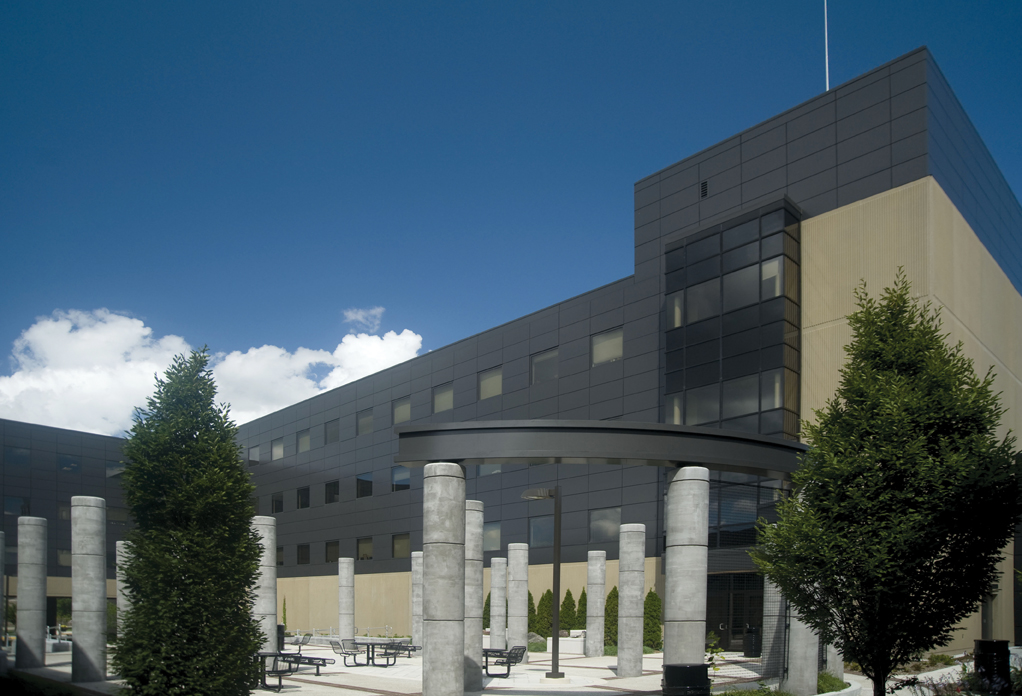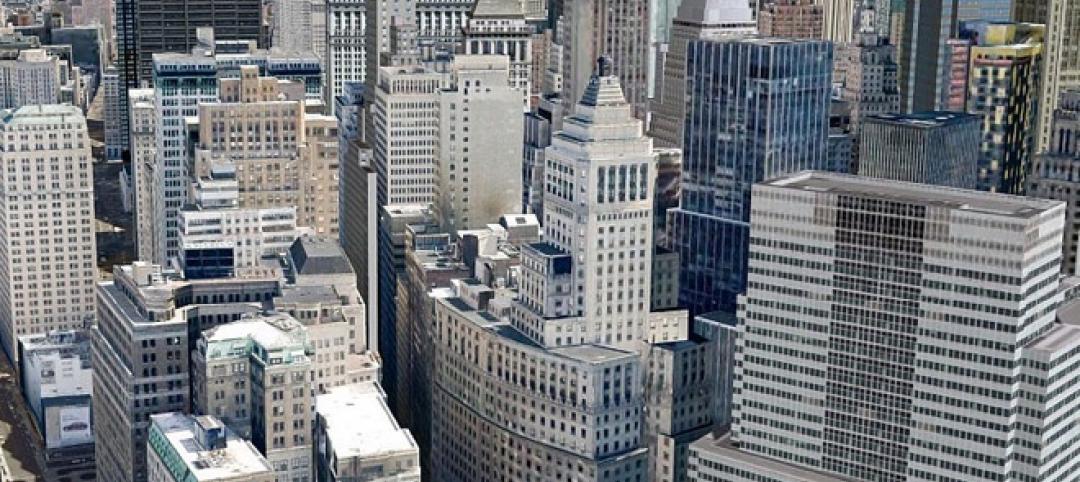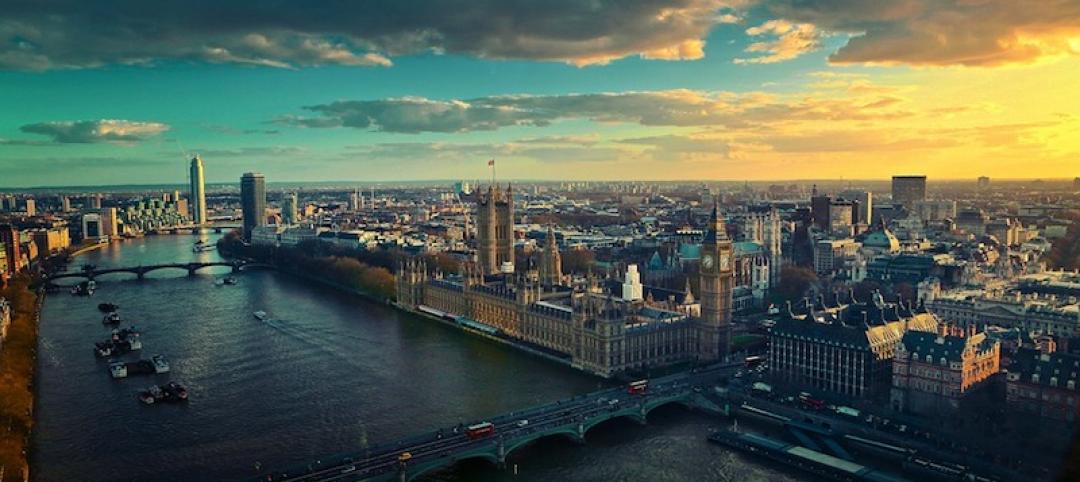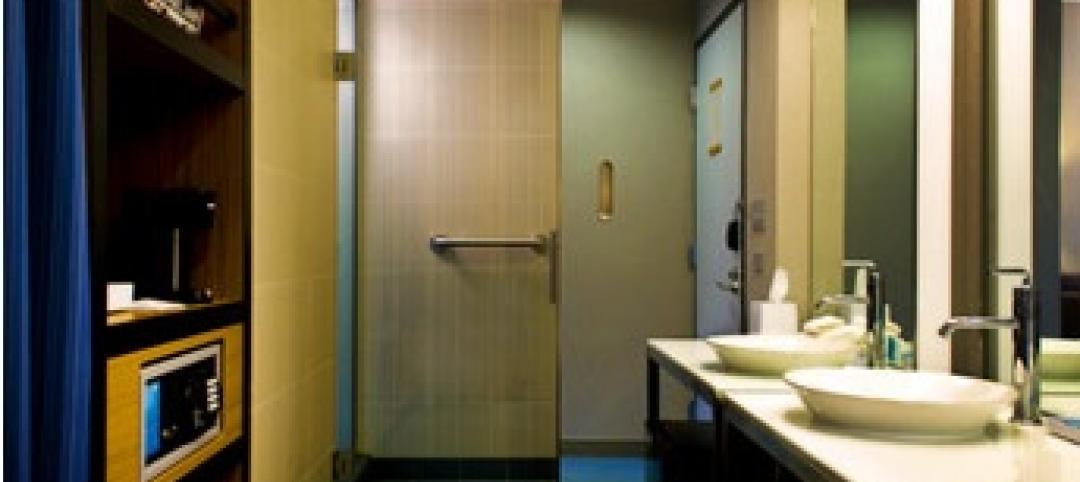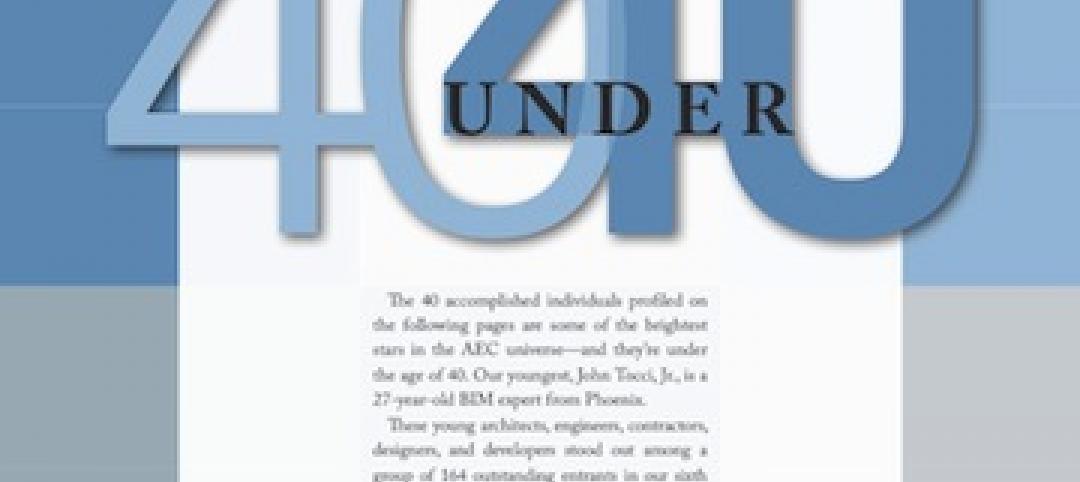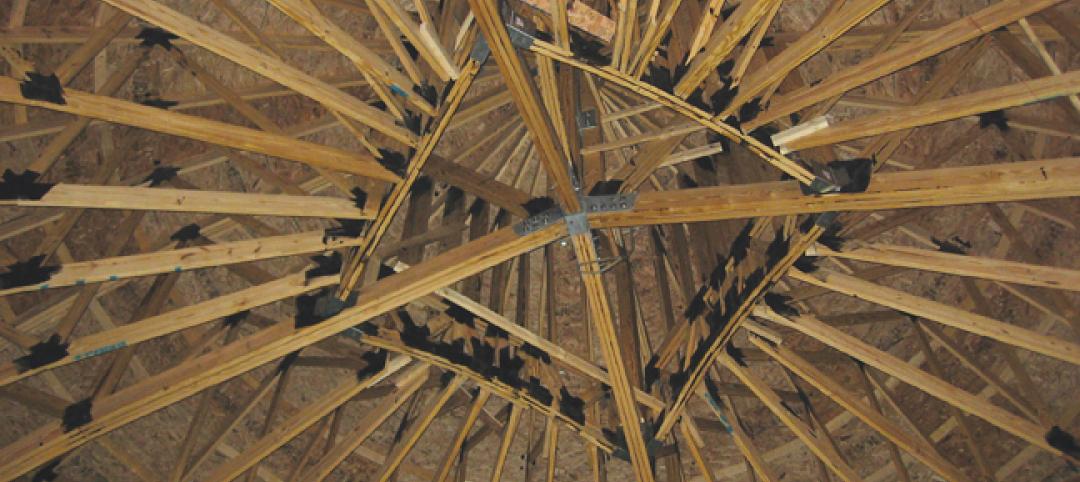In all climate zones, the various forms of metal cladding—single-skin panels, metal composite materials (MCM) panels, and insulated metal panels (IMPs)—are proving to be reliable, durable elements on more and more office buildings, hospitals, multifamily housing, industrial structures, and other commercial and institutional projects. Single-skin metal panels and metal composite panels, whether in the form of aluminum, steel, zinc, or copper, enable designers to create clean, smooth, crisp lines on exterior walls that can lend a sleek, contemporary look to any structure. Similarly, IMP products offer multiple metals, finishes, and profiles with an extensive color palette, providing designers a wide variety of aesthetic options as well as enhanced thermal performance.
Building Design+Construction spoke with building enclosure specialists and technical experts at manufacturing companies to get their insights into how Building Teams can best use metal cladding panel systems. In recent years, building enclosure experts have gained more confidence in the ability of metal cladding products to stand up to the elements and protect the building envelope. Like any cladding material, however, each type of metal panel system comes with specific attributes, requirements, and limitations that Building Teams must be aware of.
The potential difficult areas include:
• Preventing moisture penetration
• Ensuring that joints are designed correctly
• Addressing hurricane resistance codes along coastal areas
• Paying special attention to how metal cladding interfaces with windows, doors, and other cladding material
But first, let’s get down to the fundamentals.
THE BASICS OF METAL CLADDING
Metal cladding comes in many different dimensions and thicknesses, and can be custom fabricated for individual projects:
• Single-skin metal panels are available in both concealed fastener and exposed fastener varieties.
• Metal composite materials panels consist of two sheets—most often aluminum or steel—bonded to a polyethylene core. These panels are fabricated into panels using perimeter extrusions to create attachment and joinery systems.
• Insulated metal panels consist of a layer of rigid foam core insulation sandwiched between two pieces of sheet metal. These metal panels are manufactured either as a foamed-in-place system or laminated with board stock foam and can be up to six inches in thickness. Insulation values for IMP panels are available from R-10 to R-45, and in some cases as much as R-48.
Typically, most architectural applications for commercial and institutional buildings are applied to metal stud framing or structural tube supports, depending on the manufacturer’s recommendation. Concealed fastener and insulated metal panels typically attach to each other via a tongue-in-groove joint. For industrial applications, such as warehouses or industrial plants, metal panels are fastened to steel Z girts and include thermal breaks.
BARRIER WALLS AND RAINSCREEN WALLS
There are two basic types of fabricated metal panel systems: barrier walls and rainscreen walls. Barrier walls attempt to keep all rainwater from penetrating the outer face of the exterior walls. All panel joints are sealed by butyl, gaskets, or silicone sealant, applied either within the joints or to the face of the joint. The joinery seals expand and contract as needed to accommodate temperature variations and building movement. These seals, along with the factory-built panels that include air and moisture barriers, provide a high-performance exterior envelope with a low air infiltration rate; in some cases the air exchange per hour is as low as 0.043, depending on the building and climate zone. This allows IMPs to meet the “continuous insulation,” or “ci,” requirements of ASHRAE 90.1.
In contrast to a barrier wall, an effective rainscreen system allows some water to penetrate through the panel joinery. Inside the wall cavity, a weather barrier provides a drainage plane for the water to drain out of the cavity. A variation of this design is the pressure-equalized rainscreen system, which provides air vents for each panel to equalize pressure between the outside and inside of the systems. This design aims to prevent water droplets from being driven through the panel joints because wind pressure acting on the outer face of the panel is equalized in the cavity.
When properly installed, there should be no significant pressure differential to drive rain through joints. During extreme weather, a small amount of water may penetrate the outer cladding; it should run down the back of the cladding sheets as droplets and be dissipated through evaporation and drainage.
| EXTRA: 8 Helpful Tips from Metal Cladding Manufacturers |
Joinery systems between panels must be properly designed to accommodate thermal expansion and differential movements between panels. Narrower joints can have more difficult tolerances to meet in the field because smaller variations in the placement of panel joints may be more noticeable to the eye than the same amount of variation in a wider joint, according to Rob Kistler, AIA, a principal with The Facade Group LLC, Portland, Ore. That’s because an eighth-inch variation in a quarter-inch joint looks bigger in proportion to an eighth-inch variation in a half-inch joint.
If an open-joint rainscreen system is improperly designed or installed, it might let in more rain than it is designed to accommodate. “The wind-driven rain could go right through and strike the weather barrier,” Kistler says. “You want to make sure that you block the horizontal rain. If there’s any kind of a hole in the membrane, with water shedding down it, the water is going to find the hole.” That could result in water infiltration into the building.
A key part of a successful open-joint rainscreen panel design is the drainage plane behind the cladding, says Linda McGowan, PE, AIA, president and principal with Building Consultants & Engineers, Littleton, Colo. “You have to make sure that the moisture that gets behind the cladding is able to drain—that it has a reasonable means of getting out from behind the metal panel system,” she says. The width of the air gap between the cladding and the structural frame is a key factor for proper drainage, providing adequate pressure equalization, and enabling the weather barrier to dry after exposure to moisture.
“There is always going to be something that is going to interrupt the drainage plane,” McGowan adds. “You need to understand that and provide reasonable accommodation.” Areas of particular concern: behind heads of windows, heads of doors, and the points where the panels are attached to the structure. Water that encounters those points needs to have a drainage pathway.
The bottom line is that with proper design and a qualified, experienced installer, the chances of significant water intrusion occurring in an open-joint rainscreen system can be greatly reduced.
HOW TO IMPROVE WATER TIGHTNESS
Water tightness is a relative standard depending on the application. On a single-story industrial building, for example, some water intrusion may be acceptable. If a small amount of water penetrates the cladding and ends up on the edges of a concrete shop floor where it can quickly dry, it may be an acceptable outcome.
In regions of the country where the possibility of water intrusion is a major concern, designers should create a mockup of a section of cladding and test it for water penetration, says building enclosure consultant Richard Keleher, AIA, CSI, LEED AP, of Concord, Mass. The American Architectural Manufacturing Association 508-07 test for pressure-equalized rainscreen systems includes a cyclic check for rapid pressure equalization, a static water test, and a dynamic water test that employs an aircraft engine to blow water at a section of panel constructed to emulate the finished product. The AAMA 508-07 test allows water (usually mist) to contact up to 5% of the air/water barrier, with no damming or streaming, to earn a pass rating. To get accurate results, you have to ensure that the mockup test is designed to the 508 test specifications, making sure the corners of the test section are airtight and watertight, Keleher adds.
| EXTRA: Checklist of Best Practices for Metal Panel Projects |
Another test manufacturers can use for rainscreens is AAMA 509-09, which provides ratings for water intrusion (W) and ventilation (V), according to Rick Brow, marketing director for Centria Architectural Systems, Moon Township, Pa. “The desired effect is to have minimal water and high ventilation to dry the cavity,” says Brow, author of the manual Advanced Thermal and Moisture Protection. A rating of W1 (equivalent to one ounce or less of water penetration in 15 minutes) and V4 (6-8 cfm/sf in 15 minutes) would be “a highly effective result.” The W1 rating is basically the same as the rating achieved with AAMA 508, says Brow.
For barrier walls, the appropriate weather tightness tests are ASTM E 331 (water infiltration), ASTM E 283 (air leakage), and AAMA 501.1 (dynamic water pressure), according to Doug Pickens, VP of sales and marketing, Metl-Span, Lewisville, Texas.
WATCH YOUR WINDOWS TO AVOID PROBLEMS WITH THERMAL BRIDGING
All building cladding systems have some degree of thermal bridging. Thermal bridging can occur at fastener locations, joints, and intersections with other materials. Reducing the number of fasteners, joints, and penetrations, combined with careful detailing, can minimize the effects of thermal bridging in metal panel wall assemblies. Providing insulation outside the support framing system is also recommended to help minimize thermal bridging.
The concept of a continuous thermal barrier was originally recommended in the 2001 Massachusetts Energy Code. This more stringent continuous insulation, or “ci,” code requirement is likely to become more common in other states, given the trend toward more energy-efficient structures.
Thermal gain and loss from fenestration systems should be of much greater concern to Building Teams than thermal bridging. In the case of structures with many windows, it is important to invest in high-efficiency windows as well as the appropriate metal cladding material in order to make the building envelope as energy efficient as possible.
The metal panel industry is continuing to study how its products can contribute more to the greening of the built environment. One of metal cladding’s green characteristics is the ability to be recycled after its lifespan expires. The technology has already won over building enclosure specialists, and as building science advances, metal panel systems, insulation, and air and vapor barrier solutions will continue to be improved. Odds are that metal panel systems—with their many advantages—will become an even more popular cladding choice in the years to come.
Related Stories
| May 25, 2011
Developers push Manhattan office construction
Manhattan developers are planning the city's biggest decade of office construction since the 1980s, betting on rising demand for modern space even with tenants unsigned and the availability of financing more limited. More than 25 million sf of projects are under construction or may be built in the next nine years.
| May 25, 2011
Olympic site spurs green building movement in UK
London's environmentally friendly 2012 Olympic venues are fuelling a green building movement in Britain.
| May 25, 2011
TOTO tests universal design at the AIA conference
If you could be 80 years old for 30 minutes—and have to readjust everything you think you know about your own mobility—would you do it?
| May 20, 2011
Hotels taking bath out of the bathroom
Bathtubs are disappearing from many hotels across the country as chains use the freed-up space to install ever more luxurious showers, according to a recent USAToday report. Of course, we reported on this move--and 6 other hospitality trends--back in 2006 in our special report "The Inn Things: Seven Radical New Trends in Hotel Design."
| May 19, 2011
BD+C’s "40 Under 40" winners for 2011
The 40 individuals profiled here are some of the brightest stars in the AEC universe—and they’re under the age of 40. These young architects, engineers, contractors, designers, and developers stood out among a group of 164 outstanding entrants in our sixth annual “40 Under 40” competition.
| May 18, 2011
Sanford E. Garner on the profitability of being diverse
Sanford E. Garner, AIA, NOMA, LEED AP ND, NCARB, founding partner and president of A2SO4 Architecture, LLC, Indianapolis, on gentrification, the profitability of being diverse, and his goals as NOMA president.
| May 18, 2011
8 Tips for Designing Wood Trusses
Successful metal-plate-connected wood truss projects require careful attention to detail from Building Team members.
| May 18, 2011
Major Trends in University Residence Halls
They’re not ‘dorms’ anymore. Today’s collegiate housing facilities are lively, state-of-the-art, and green—and a growing sector for Building Teams to explore.
| May 18, 2011
Former Bronx railyard redeveloped as shared education campus
Four schools find strength in numbers at the new 2,310-student Mott Haven Campus in New York City. The schools—three high schools and a K-4 elementary school—coexist on the 6.5-acre South Bronx campus, which was once a railyard.


